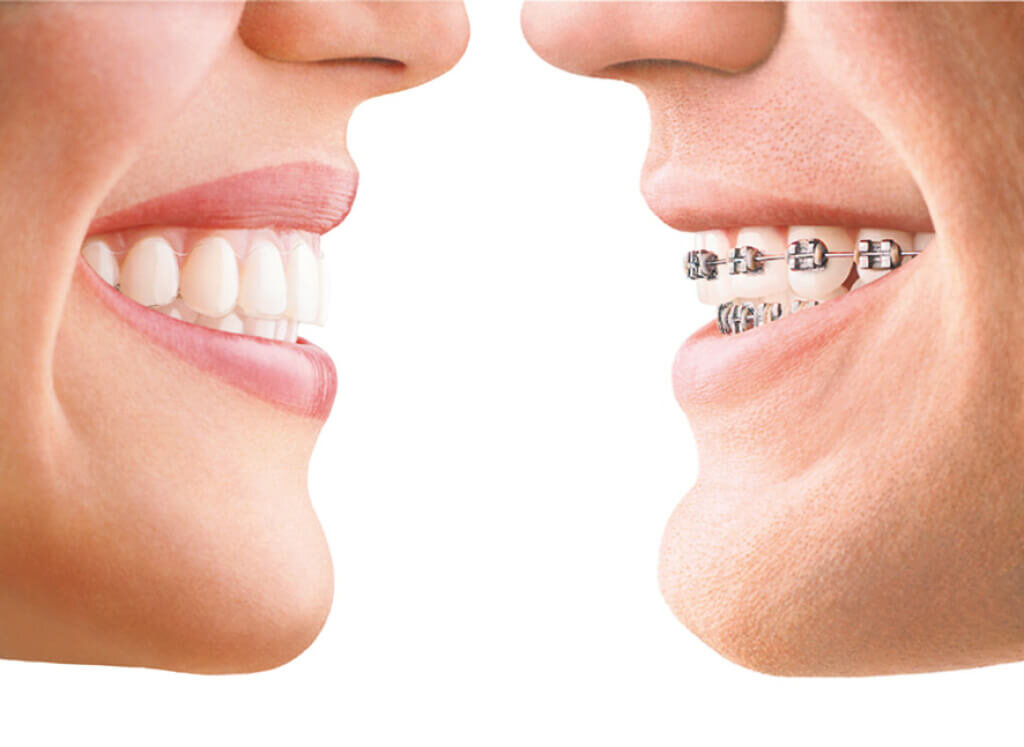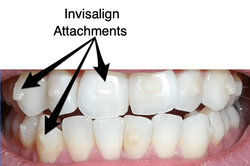Top Factors to Choose Invisalign Over Other Orthodontic Treatments
Top Factors to Choose Invisalign Over Other Orthodontic Treatments
Blog Article
Invisalign vs. Standard Braces: Which Choice Is Right for You?
When taking into consideration orthodontic treatment, the selection between Invisalign and traditional dental braces offers numerous crucial variables that merit cautious evaluation. Invisalign provides a very discreet alternative with detachable aligners, while typical braces give a much more visible yet reliable solution for severe misalignment. Each option includes distinctive advantages and downsides associated with appearances, comfort, treatment period, and expense. Comprehending these nuances is important for making a notified choice that straightens with your individual preferences and lifestyle. The concern remains: which alternative will ideal fulfill your orthodontic requirements and expectations?
Overview of Treatment Alternatives

On the other hand, typical dental braces contain metal braces and cords that are bonded to the teeth. This technique uses constant stress in time to accomplish alignment. While efficient for complex orthodontic concerns, traditional braces need normal brows through for changes and can position challenges in preserving dental health because of the trouble of cleaning up around cables and braces.
Both alternatives have their qualities, and the choice commonly rests on specific dental problems, lifestyle choices, and patient compliance. Ultimately, getting in touch with an orthodontic professional is essential for determining one of the most appropriate therapy strategy customized to individual requirements. Recognizing the nuances of each option can substantially affect the overall success of orthodontic therapy.
Aesthetic Factors To Consider
A significant factor influencing the choice in between Invisalign and conventional braces is the aesthetic appeal each treatment uses. Invisalign aligners are crafted from clear plastic, making them virtually undetectable when used. This very discreet appearance is particularly attracting grownups and teens that may really feel uncomfortable concerning their orthodontic therapy. The capability to keep an all-natural smile throughout the placement procedure can significantly boost the person's confidence in professional and social settings.
In contrast, traditional dental braces contain steel brackets and cords, which can be a lot more obvious. While developments in orthodontic innovation have actually resulted in the advancement of smaller sized brackets and colored elastics, standard braces still maintain a more noticeable profile. For some individuals, the visibility of dental braces might deter them from seeking necessary therapy.
Ultimately, the selection between Invisalign and traditional dental braces may pivot on individual choices pertaining to aesthetic appeals. People that prioritize discernment often favor Invisalign, while those that are less concerned concerning exposure may choose for standard braces. Recognizing the aesthetic implications of each alternative is critical for making an informed choice that straightens with one's way of life and preferences.
Convenience and Convenience

In regards to convenience, Invisalign aligners are detachable, allowing clients to enjoy their favorite foods without limitation and preserve ideal dental health. Brushing and flossing are streamlined, as the aligners can be taken out throughout these regimens, whereas typical dental braces need mindful steering around brackets and cables.
In comparison, typical braces demand regular modifications, making them less hassle-free for those with hectic schedules. On the whole, the comfort and benefit of Invisalign make it an appealing option for numerous people seeking orthodontic treatment.
Therapy Period and Effectiveness
While both Invisalign and standard dental braces are effective in dealing with dental misalignments, the period of therapy can differ considerably between the two alternatives. Usually, Invisalign therapy can take anywhere from 12 to 18 months, relying on the complexity of the case. The clear aligners work by progressively shifting teeth right into their wanted settings, and normal follow-ups with an orthodontist help make sure progress stays on course.
In comparison, conventional braces often call for why not find out more a longer dedication, normally varying from 18 months to three years. This results from their set nature and the usage of cables and brackets, which can be much more reliable for complicated situations and severe imbalances (Invisalign). The therapy efficiency of typical braces is well-documented, as they permit specific adjustments and higher control over tooth movement
Ultimately, the selection between Invisalign and standard dental braces may hinge on both the awaited therapy period and the particular dental problems handy. Consulting with an orthodontist is critical, as they can give tailored referrals based on individual demands, guaranteeing the picked technique straightens with desired results and durations.
Cost Contrast and Insurance Coverage Alternatives
Price plays a considerable duty in the decision-making process for people thinking about orthodontic therapy, whether going with Invisalign or conventional braces. Generally, the expense of Invisalign ranges from $3,000 to $8,000, while traditional braces usually set you back between $2,000 and $6,000. Aspects affecting these expenses consist of the intricacy of the case, the period of treatment, and geographical place.
Insurance coverage can dramatically affect out-of-pocket expenses. Lots of oral insurance coverage plans offer partial coverage for orthodontic treatments, however the specifics can vary extensively. It is critical for patients to assess see this their insurance coverage to figure out the level of coverage for either alternative. Usually, typical dental braces may be extra often covered by insurance coverage plans compared to Invisalign, which some insurers categorize as an aesthetic procedure.
In addition, several orthodontic techniques use flexible layaway plan, making both therapy choices extra easily accessible. Patients must inquire about possible funding alternatives and discounts for in advance settlements. Reviewing the total cost, consisting of insurance policy benefits and layaway plan, is essential for making an informed decision that lines up with both aesthetic preferences and budget plan considerations.

Final Thought
In summary, the selection between Invisalign and traditional dental braces depends upon multiple aspects, consisting of visual choices, convenience, treatment duration, and price. Invisalign supplies a discreet, detachable choice that helps with oral health and dietary versatility, while typical braces may be better for intricate dental concerns and often come at a reduced rate point. Eventually, examination with an orthodontist is important to assess specific conditions and establish one of the most appropriate treatment choice for achieving optimal oral alignment.
When considering orthodontic therapy, the choice between Invisalign and standard braces presents several vital their explanation factors that warrant cautious analysis.Contrasting Invisalign and typical dental braces exposes distinctive treatment alternatives for orthodontic correction.While both Invisalign and typical dental braces are effective in fixing dental imbalances, the period of treatment can vary considerably in between the two alternatives.Cost plays a substantial role in the decision-making procedure for people taking into consideration orthodontic therapy, whether opting for Invisalign or standard braces.In recap, the choice between Invisalign and standard dental braces hinges on multiple aspects, consisting of aesthetic choices, comfort, treatment period, and price.
Report this page